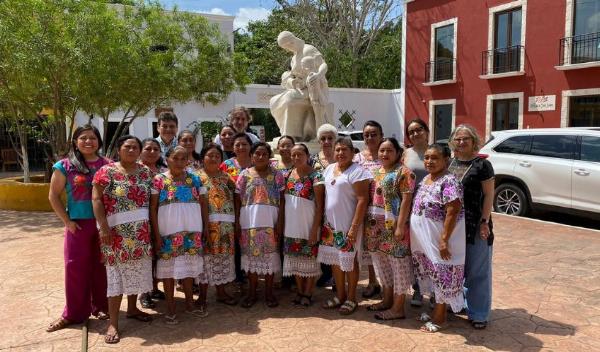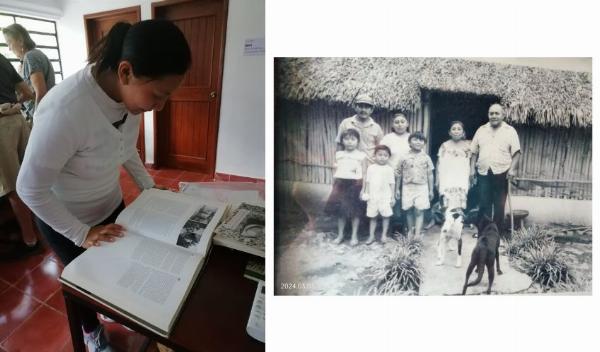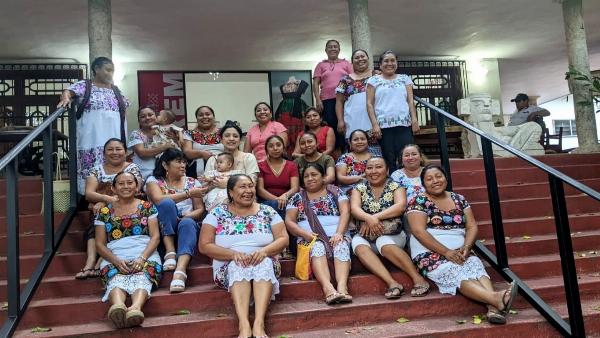The exhibition “U chuyulil u tsikbalil Xocen” explores the life of a Mayan community.
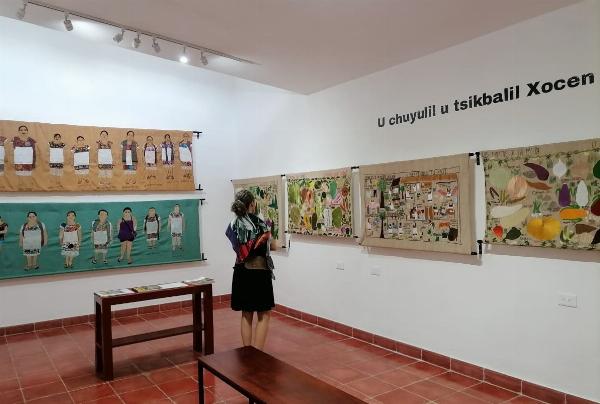 Publicado: 11-02-2024
- Tempo de leitura: 2 minuto
Publicado: 11-02-2024
- Tempo de leitura: 2 minutoMUREM is sensitive to the cultural diversity that exists in the regions of our country, which is why there is U chuyulil u tsikbalil Xocen/Embroidery the history of Xocen, a textile exhibition about the life of a Mayan community, Xocen, through embroidery. The work shows scenes in 12 tapestries that are so perfectly sewn and for many visitors, when observing them, they give their opinion of being so realistic, making their admiration for this town visible.
U Chuyulil u Tsikbalil shows that Mayan culture is alive, but Mayans are struggling with globalization, which has put them in danger of great change. It is why there are few localities that still preserve their traditions. The exhibition helps preserve and share the history of the Xocen community through embroidered pictures in combination with the textures and colors that capture the most significant moments of their lives. It transmits knowledge to new generations, the voice of a people, showing the community's cultural importance as well as serving as an example so that other localities take the initiative to preserve their customs and traditions. In Xocén, which is located 12 kilometers from the city of Valladolid, Yucatán, ceremonies continue to be carried out that give continuity to the pre-Hispanic past. Their Mayan worldview is the belief that Xocen is the center of the world in addition to the fact that in this location is the Santa Cruz, or holy cross.
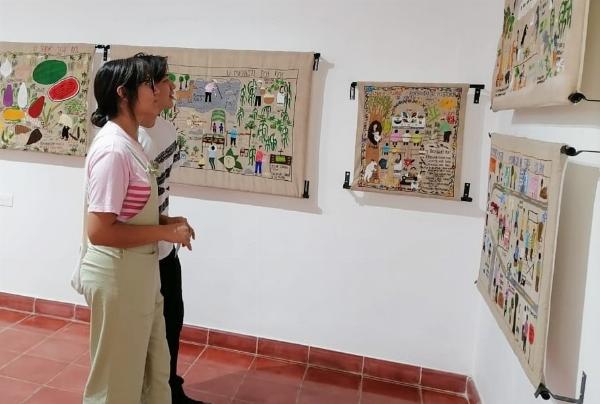 The exhibition shows scenes from the pre-Hispanic vision to the present day of the town, where they talk about various stories such as the belief that in this place God read and signed his will and it explains the origin of many things in the world. In a similar way, there is another piece that gives identity to this Mayan people, it is the sacred book, it is believed to be a living book where it is explained how all things are done, but unfortunately they say that it was stolen years ago by the "whites" and one day it will return to be placed before the Santa Cruz.
The exhibition shows scenes from the pre-Hispanic vision to the present day of the town, where they talk about various stories such as the belief that in this place God read and signed his will and it explains the origin of many things in the world. In a similar way, there is another piece that gives identity to this Mayan people, it is the sacred book, it is believed to be a living book where it is explained how all things are done, but unfortunately they say that it was stolen years ago by the "whites" and one day it will return to be placed before the Santa Cruz.
In Xocen they also tell legends about supernatural beings called wayes who are people related to magic and have the ability to transform into animals by simply changing their heads to the species they want, for example into a pig, dog, or a goat, with the intention of disturbing the houses of residents at night, throwing around household utensils. Likewise, today they make it known that some things have changed, as shown in the tapestry, From farmer to waiter, because several men have migrated to tourist areas such as the Riviera Maya with the intention of finding better employment opportunities, and neglecting their local traditions.
The exhibition was organized by the anthropologist Christian Rasmussen through talks with various people, especially with the milpero Gaspar Canul Nahuat, who selected the scenes and is the author of the Spanish and Mayan texts sewn into the tapestries. The young man, Laureliano Canul Cohuo, converted the traditions and stories into images. The embroiderers were Anacleta Canul Noh, Balbina Cohuo May, Jacinta Noh Pech, María de Jesús Canul Noh, Germina Noh Pech, and Francisca May May.
MUREMShare it | | Whatsapp

